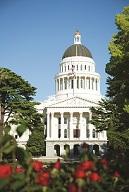

Fast forward to 2016. Governor Brown has delivered five on-time and balanced budgets for the first time in over a decade – eliminating a $27 billion deficit and generating a $6 billion budget surplus. The big three credit rating agencies have consistently upgraded California’s bond ratings. California now has an unemployment rate of 5.5 percent and its economic growth is outpacing the nation. The Golden State surpassed Russia, Italy, Brazil and France to become the sixth-largest economy in the world .
How Did California Achieve its Economic Leader Status?
Under the leadership of Governor Brown, California made significant strides to improve its business climate by cutting red tape, embracing technology in state government and making new investments in economic development and job creation.
California now has one of the largest – if not the largest - job creation tax credit programs in the U.S., the largest film tax credit and the largest tourism marketing budget.
Since Governor Brown established the California Competes Tax Credit in 2014, the Governor's Office of Business and Economic Development (GO-Biz) has allocated $340 million to 500 companies that are projected to create 55,000 jobs and make $12 billion in investments in the Golden State. In fiscal year 2016-17 alone, GO-Biz is allocating over $243 million in tax credits for companies small and large in every corner of California that want to expand and add jobs.
Here are some of the highlights from the tax credit so far:
-
The newest Chinese electric vehicle manufacturer Faraday & Futures received a $12.7 million tax credit to create 1,990 jobs and it also has plans to build a state-of-the-art facility on a vacant 163-acre former naval base. That’s in addition to its U.S. headquarters which is located in Gardena, California.
-
Social media pioneer and California-born startup Snapchat received a $5 million tax credit to create 1,194 jobs in the exploding Silicon Beach area of Southern California.
-
Aerospace manufacturing leader Northrup Grumman received a $10 million tax credit to hire 1,350 people in Southern California to design, develop and produce manned aircraft, unmanned systems, spacecraft, high-energy laser systems and microelectronic technology.
-
Global technology leader Samsung received a $15 million tax credit to expand its semiconductor manufacturing capacity in San Jose.
-
Energy drink and extreme sports pioneer Red Bull received a $1.6 million tax credit to expand its worldwide headquarters in Santa Monica.
New company announcements are happening every day.

Why Didn’t I Know About This?
Thousands of companies have relocated and/or expanded to California but you likely didn’t hear about it because the state doesn’t hold a press conference every time a company adds jobs. For example, in 2016, Cerebain Biotech announced it was moving its U.S. headquarters from Dallas to Costa Mesa because California has a more skilled and educated workforce. Florida virtual reality startup Magic Leap expanded to California thanks in part to a GO-Biz tax credit. Titan Aerospace moved its manufacturing facility from New Mexico to California and returned a $1 million incentive package – that’s how much it wanted to be in California. Many people may have never even heard about these companies expanding in California because it doesn’t fit the naysayers’ narrative about the Golden State.
Consider what you’ve heard about California and match that against these facts:
-
Manufacturing by the Numbers: California is the national leader in manufacturing by almost every measure. There are more manufacturing jobs, companies and output from California than any other state. California has twice as many manufacturing companies as the No.2 state. Since 2011, manufacturing output in California has steadily risen from approximately $220 billion to $255 billion in 2014.
-
Biotech: California is the global leader in biotech with the most jobs, companies, patents and investment of any place in the world. There are three high-concentration regional clusters of biotech companies – the Bay Area, Los Angeles and San Diego – and each region has more biotech companies than almost every other state.
-
Automotive: The automotive industry in California grew by over 20 percent between 2011 and 2015. California’s largest manufacturer is an automotive company with over 10,000 employees. In the last four years, over 25 auto companies have expanded or made huge investments in California including: Honda, Ford, Hyundai, Fisker, Tesla, Proterra, Faraday & Futures, Next EV, Masserati, Aston Martin, Porsche, Mercedes Benz, Volvo, Chevy, GM, Mazda and so many more.
-
Job Growth: California has 38 million residents and led the nation in job growth the last two years running.
What is the State Doing to Keep the Momentum Going?
The State of California helps facilitate job growth but the companies are the real job creators. The mission at GO-Biz is to match the speed and versatility of the business community. That is why it embraces technology, teaches efficiency standards taken from the private sector and offers flexible and competitive incentive packages that mirror a company’s growth trajectory.

GO-Biz also launched the first-ever LEAN 6-Sigma training program for state agencies that takes the efficiency training programs pioneered by companies like Motorola and GE and applies them to state government. State employees undergo training and learn how to cut red tape and make government more efficient. It is constantly looking for ways to improve state government and provide new tools for business owners.
The Bottom Line
The bottom line is California – like any big state – has challenges and is constantly evolving programs and approaches to meet them head-on — but don’t believe the hype that California is struggling. As Governor Brown once said, “the rumors of our demise are greatly exaggerated.”
California’s economy is stronger, more diverse than ever and, with continued steady leadership, the Golden State will continue to evolve and prosper. It has always been and will continue to be a model for the rest of the country.
Contributed by Brook Taylor, California deputy director for communications who helped establish California’s first economic development agency, GO-Biz.

